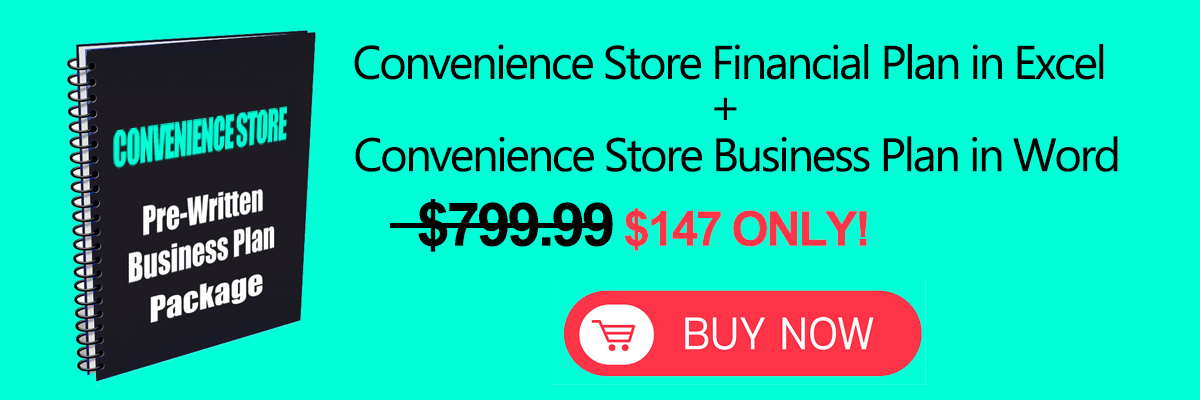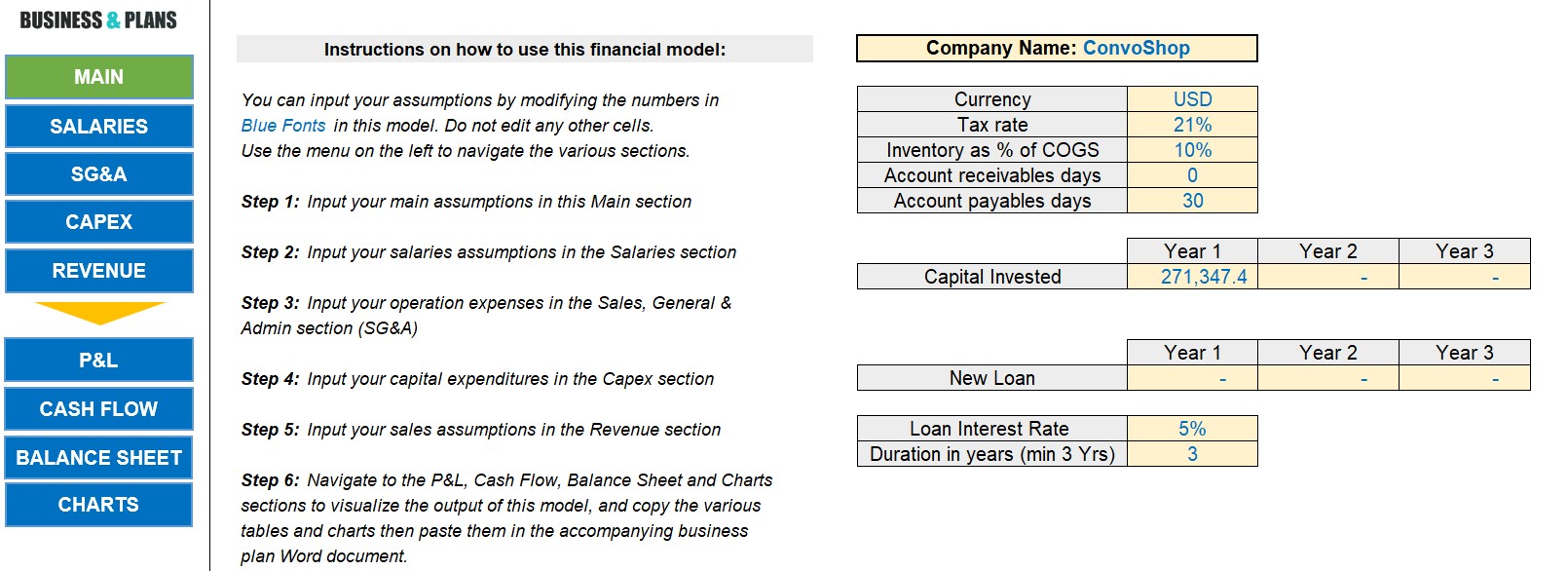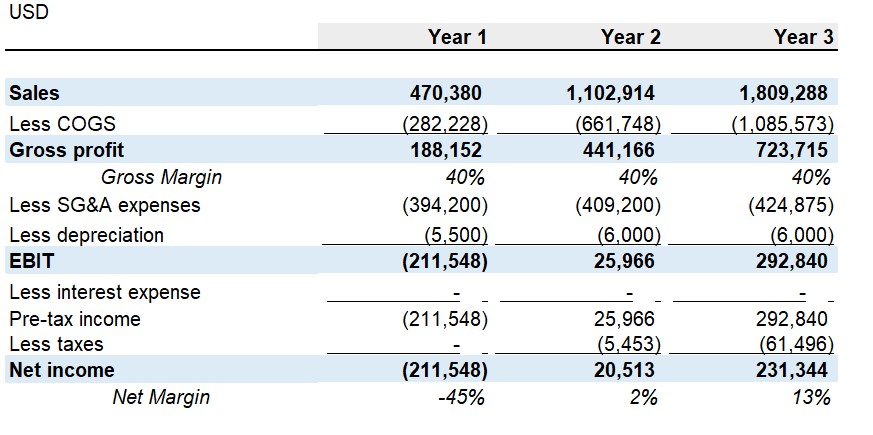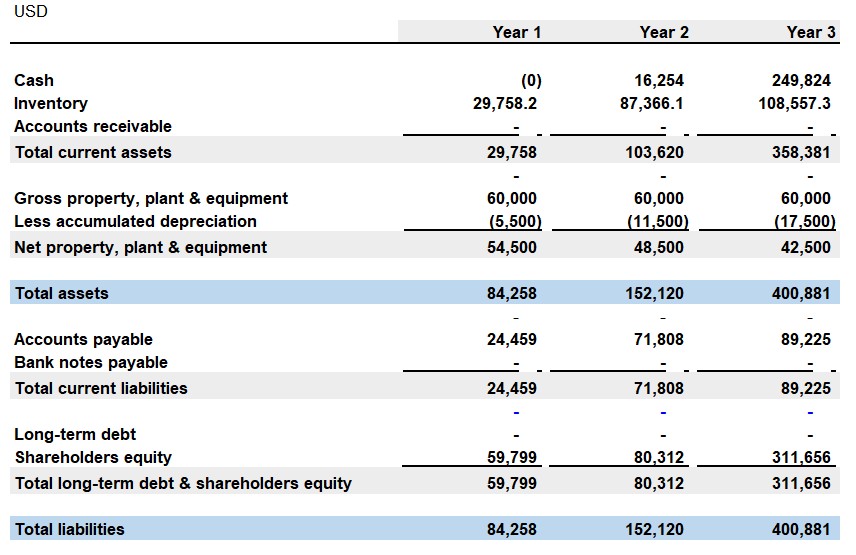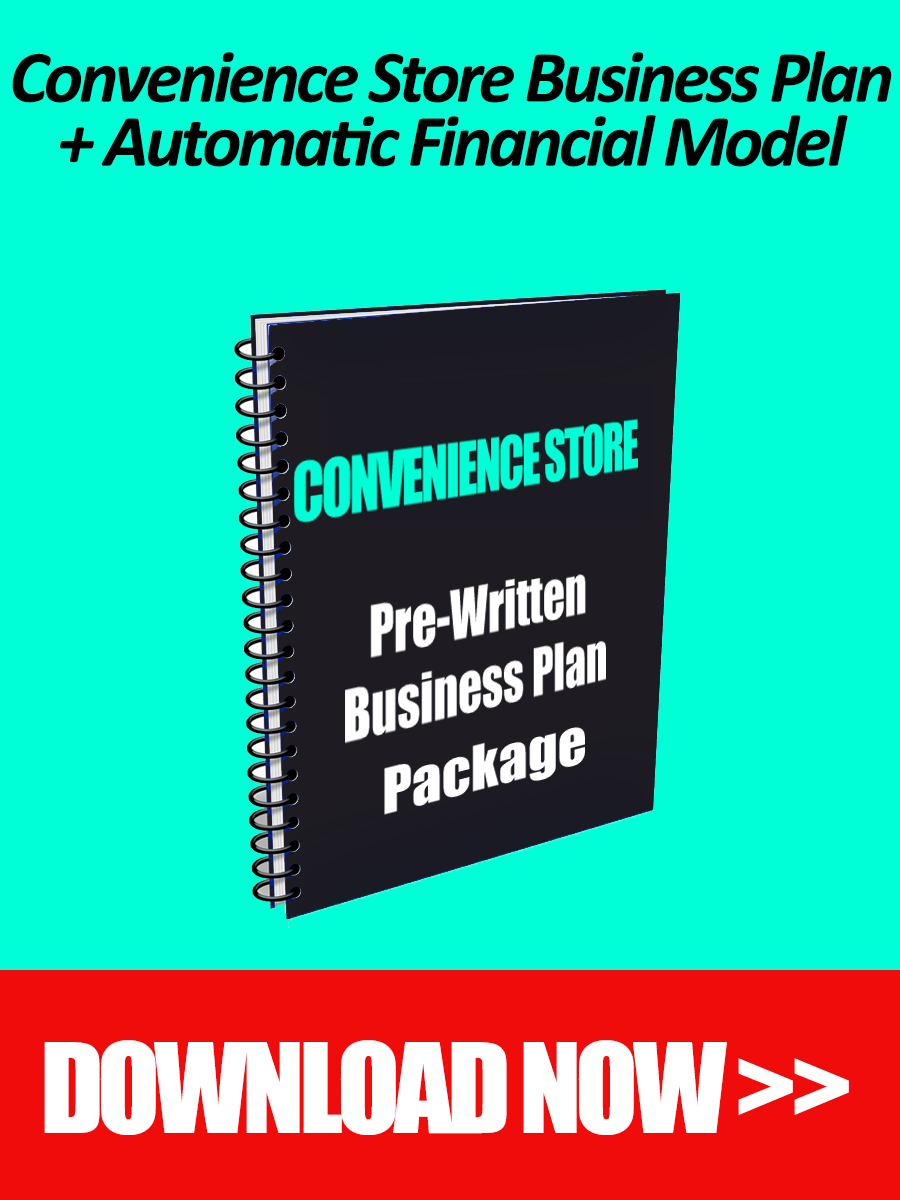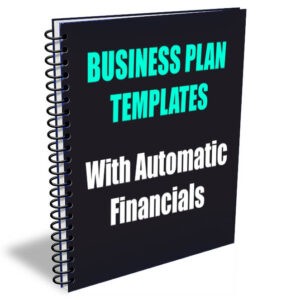Starting and operating a successful convenience store requires more than just a great location and a selection of quality products. It demands a well-structured financial plan that serves as the bedrock for informed decision-making, sustainable growth, and overall business success.
For the past decade or so, I have been helping retail entrepreneurs build detailed, investor-grade business plans for their supermarkets and grocery stores, and in this article, I wish to share with you the crucial aspects of building a comprehensive financial plan for a convenience store as part of your business planning process.
First, we will explore the process of forecasting costs, examining the initial investments and ongoing expenses that contribute to your convenience store’s operational budget. Then, we will delve into forecasting capital expenditures, understanding the essential investments in fixtures, equipment, and technology that play a pivotal role in shaping the store’s efficiency and customer experience.
Next, we will analyze the critical aspect of forecasting revenues, where market analysis and consumer behavior come into play. Accurate revenue projections lay the groundwork for realistic financial expectations and ensure that the convenience store remains competitive and sustainable in a dynamic marketplace.
To gauge the profitability of the venture and assess its financial performance, we will construct a Profit and Loss (P&L) statement. This statement provides a comprehensive view of revenues, costs, and expenses, allowing you to identify areas for cost optimization and strategic planning.
Furthermore, we will develop a cash flow statement, highlighting the inflows and outflows of cash over a specific period. An effective cash flow management plan is vital for maintaining liquidity, managing debts, and seizing growth opportunities without encountering financial strain.
Lastly, we will address the importance of a balanced balance sheet, providing a snapshot of the convenience store’s financial position at a specific point in time.
Convenience Store Financial Plan Template in Excel
To help you build a robust convenience store financial plan, we suggest you to check out our ready-made convenience store business plan package. It includes a pre-written business plan text in Word and an automatic financial spreadsheet in Excel tailored to the convenience store industry which you can easily customize, no accounting or financial expertise needed.
Without further ado, let’s tackle the costs involved in operating a convenience store.
Cost Forecast for a Convenience Store
In the early stages of planning your convenience store, accurately forecasting costs is crucial to determine the financial resources needed to get your business off the ground and keep it running smoothly. Identifying both one-time startup costs and recurring operational expenses will give you a comprehensive understanding of the financial commitment required.
Startup Costs: Building the Foundation
When envisioning your convenience store, start by considering the necessary initial investments to set up shop. These startup costs typically include:
- Location and Lease: Finding the right location is paramount to the store’s success. You’ll need to budget for lease payments and possibly a security deposit, depending on the terms of your agreement.
- Renovations and Fixtures: Creating an attractive and functional store layout may require renovations and fixtures and various expenses related to interior design, shelving, displays, and signage.
- Initial Inventory: Estimate the cost of stocking your store with an initial inventory of products, ensuring you have a diverse range of items to meet your customers’ needs.
- Licenses and Permits: This includes fees for business licenses, health permits, and other regulatory requirements.
- Technology and Equipment: This includes point-of-sale systems, cash registers, security cameras, and other technology items needed for the day-to-day operations.
- Initial Marketing Budget: Allocating funds for marketing and promotion is vital to attract customers to your store in the launch phase. Consider digital marketing, local advertising, and promotions to create initial buzz.
Ongoing Operating Expenses: Keeping the Wheels Turning
Beyond the initial setup, you must plan for recurring expenses to maintain day-to-day operations. These ongoing operating costs include:
- Rent and Utilities: First, budget for monthly rent payments and utilities, such as electricity, water, and gas. These expenses tend to be fixed from month to month.
- Payroll and Benefits: Next, account for wages, salaries, and any employee benefits you plan to offer. You should also account for any bonuses and salary raises you may want to offer.
- Inventory Replenishment: It is important to regularly restock your inventory to meet customer demands, and thus you need to consider costs related to purchasing new stock on a periodic basis.
- Insurance: Don’t forget to protect your business and its assets by investing in adequate insurance coverage, including liability insurance and property insurance.
- Maintenance and Repairs: Any store needs periodical repairs and maintenance and a convenience store is no exception. Anticipate costs for maintaining your store, equipment, and fixtures in good working condition.
- Contingency Fund: Many financial planners set aside a contingency fund to handle emergencies or unexpected challenges and we advise you to do that as well.
Next, let’s move on to forecasting capital expenditures to identify the essential investments that will elevate your convenience store’s efficiency and customer experience.
Convenience Store Financial Plan: Forecasting Capex (Capital Expenditure)
Capital expenditures, or Capex, encompass the investments made in long-term assets that contribute to the growth and efficiency of your convenience store. These assets have a lasting impact on your business and are crucial for providing an excellent shopping experience for your customers. Careful planning and allocation of funds towards Capex can lead to a competitive advantage and ensure your store remains relevant and attractive in the retail and grocery market.
Fixtures and Store Equipment
Let’s first list the fixtures and equipment needed to create an inviting and functional shopping environment:
- Shelving and Displays: Invest in high-quality shelving and displays that maximize product visibility and encourage impulse purchases. These items are the backbone of your convenience store.
- Refrigeration Units: These are needed to store perishable goods and maintain product freshness hence it is paramount to select and invest in high quality refrigerators and freezers.
- Checkout Counters and Cash Registers: To ensure a smooth checkout process, you need modern and reliable checkout counters as well as cash registers.
- Store Decor and Branding: Invest in a cohesive store design that aligns with your brand identity and creates a lasting impression on customers.
- Lighting: Proper lighting can influence customer behavior and boost sales so don’t neglect this aspect of your convenience store.
- Outdoor Signage: Optimize outdoor signage to attract foot traffic and increase brand visibility.
Technology and Software
Now let’s have a look at the main technology and software Capex items you may need in your upcoming convenience store:
- Point-of-Sale (POS) Systems: Invest in an advanced POS system to manage transactions, inventory, and sales data efficiently. A good POS system is a fundamental part of your convenience store’s infrastructure so make sure you do your research to find the best solution for your specific needs.
- Security Systems: To help you safeguard your store with surveillance cameras, security alarms, and access control systems.
- Inventory Management System: How can you track stock levels, identify fast-moving items, and streamline ordering processes? The answer: An automated inventory management system. Make sure you invest in a good one.
- Customer Relationship Management (CRM) Software: This is crucial to manage customer data, preferences, and loyalty programs as well as enhance customer retention and engagement.
- Online Ordering and Delivery Platform: If you offer online ordering and delivery services, invest in a user-friendly platform that integrates seamlessly with your store operations. You may want to develop your own e-commerce website or partner with various grocery delivery apps.
- Digital Signage and Advertising: Consider digital signage to display promotions, deals, and engaging content to attract customers.
Forecasting the Revenues of a Convenience Store
Forecasting revenues is a pivotal step in your financial planning process, as it provides a realistic projection of the income your convenience store can generate over a specific period. Understanding your potential revenue streams and considering market dynamics and consumer behavior will enable you to set achievable financial goals and develop effective strategies to maximize sales. The first part of this process involves understanding your target customers.
Market Analysis and Customer Segmentation
Before diving into revenue projections, it is always a good idea to conduct a comprehensive market analysis to gain insights into your target market’s preferences, needs and buying behaviors. This will enable you to identify the demographic characteristics of your potential customers and understand their shopping habits. Here are the steps we recommend to do:
- Understand the Market Size and Growth Potential: Analyze the local market to determine the total addressable market size for your convenience store. Understand the market’s growth potential and any seasonal fluctuations that might impact sales. Let’s take an example to better understand: In a suburban area with a population of 30,000 residents, the target market for a new convenience store includes individuals aged 18 and above who are likely to shop at such stores regularly. Market research indicates that around 30% of the population falls within this target market segment and would be potential customers for the convenience store.
-
- Total Population in the Area: 30,000
- Percentage of Population within Target Market: 30%
- Total Addressable Market Size = Total Population x Percentage of Population within Target Market
- Total Addressable Market Size = 30,000 x 0.30 = 9,000
Based on this calculation, the total addressable market size for the convenience store in the suburban area would be 9,000 potential customers. This figure represents the maximum number of customers the store can reasonably expect to attract within its target market segment.
You can also look at the local population growth rate and increase in disposable income to help you forecast your revenue growth over time.
- Competitor Analysis: Research and assess the competition in your area. Understand their strengths, weaknesses, pricing strategies, and offerings to position your store competitively.
- Customer Segmentation: Divide your target market into distinct customer segments based on factors such as age, income, lifestyle, and preferences. Tailor your product offerings and marketing messages to appeal to each segment effectively.
Projected Sales Revenue
With a solid understanding of your market and customers, it is now time to estimate your convenience store’s potential sales by revenue streams:
- In-Store Sales: Forecast revenue generated from customers who visit your physical store. For that you need to understand how many orders you are generating over a certain period of time as well as your average order value. Let’s take a look at an example: With a Total Addressable Market (TAM) of 9,000 potential customers in a suburban area, a new convenience store estimates an average spending of $10 per customer per visit and projects an average of 4 visits per customer per month based on market research. By utilizing these assumptions, the forecasted in-store sales for the convenience store amount to approximately $4,320,000 per year.
- Online Sales (if applicable): If your store offers online ordering and delivery, project the revenue generated through your e-commerce platform.
- Additional Services: If you plan to provide additional services, such as bill payment, ATM services, or photocopying, also include their revenue contribution.
- Seasonal and Promotional Sales: It is crucial to account for seasonal trends and the impact of promotions and discounts on sales. Plan for peak periods and assess the potential boost in revenue during holiday seasons and special events.
By forecasting revenues accurately and aligning them with your expense projections, you can assess the viability of your convenience store business model and make informed decisions to achieve your financial objectives. The next section will delve into the construction of the Profit and Loss (P&L) statement, which serves as a crucial tool for evaluating your convenience store’s financial performance.
Profit and Loss Statement Forecast
The Profit and Loss (P&L) statement, also known as the income statement, is an major financial document for a convenience store as it provides an overview of its revenues, costs, and expenses during a specific period. The P&L statement showcases the store’s profitability and financial performance. Here are the main components of a P&L:
- Revenue: This section includes the projected revenue from in-store sales, online sales and other ancillary services (see above).
- Cost of Goods Sold (COGS): Costs of Goods Sols include the direct costs associated with the products you are selling, such as the purchase cost of inventory, packaging, and shipping expenses. It helps determine the gross profit margin. The COGS are usually variable and will depend on the sales volume.
- Gross Profit: The gross profit is calculated by subtracting the COGS from the total revenue. It represents the profit before considering other operating expenses.
- Operating Expenses: Operating expenses comprise all costs related to running the convenience store. This includes rent, utilities, employee wages, marketing expenses, and other administrative costs. See above the section on Operating Expenses for more details. Don’t forget to also subtract depreciation.
- Operating Income: The operating income is calculated by subtracting the total operating expenses from the gross profit. It represents the profit earned from the store’s core operations.
- Net Income: The net income represents the final profit after considering all expenses, including taxes and interest payments. It reflects the overall profitability of your convenience store.
Let’s talk next about cash flows.
Cash Flow Statement for a Convenience Store
The Cash Flow Statement is a fundamental financial report that tracks the inflows and outflows of cash within a convenience store over a specific period. A well-managed cash flow is paramount for sustaining day-to-day operations, paying suppliers, servicing debts, and pursuing growth initiatives. Let’s delve into the key components of the Cash Flow Statement for our convenience store.
- Operating Activities: This section accounts for the cash flows generated or used in the store’s core operations. It includes cash received from in-store sales and other revenue streams, as well as cash paid for various operating expenses, such as inventory purchases, employee wages, utilities and rent.
- Investing Activities: Investing activities detail the cash flows related to the store’s capital expenditures (Capex). It includes cash spent on purchasing fixtures, equipment, technology, and any other investments aimed at improving the store’s efficiency and customer experience. It may also include cash received upon the sale of a used asset (example: the sale of an old vehicle).
- Financing Activities: Financing activities encompass the cash flows associated with the store’s financing and capital structure. It includes cash received from loans or investments, as well as cash paid for debt repayments or dividends to investors (if applicable).
- Net Cash Flow: The Net Cash Flow represents the overall change in cash during a certain timeframe. It is calculated by summing up the cash flows from operating, investing, and financing activities. A positive net cash flow indicates that more cash is coming in than going out, while a negative net cash flow indicates that more cash is being used than generated. Investors of course prefer a convenience with a net cash flow, so make sure to do your best to turn your business cash positive.
- Cash Balance: The Cash Balance at the end of the period shows the remaining cash on hand after accounting for all cash flows. This balance is carried forward as the opening cash balance for the next period.
Last but not least, let’s talk about the Balance Sheet.
Balance Sheet Forecast
The Balance Sheet provides a snapshot of your convenience store’s financial position at a specific point in time. It presents the store’s assets, liabilities, and shareholders’ equity, offering a comprehensive view of its overall financial health.
The Balance Sheet follows the accounting equation: Assets = Liabilities + Shareholders’ Equity. Let’s explore the key components of the Balance Sheet.
Assets
Current Assets: This section includes assets that are expected to be converted into cash or used up within one year. It consists of cash on hand, accounts receivable (amounts owed by customers), inventory, and other short-term assets.
Non-Current Assets: Non-current assets are those with a longer useful life and are not expected to be converted into cash within one year. Examples include fixtures, equipment, technology, and any other long-term investments within your convenience store.
Liabilities
Current Liabilities: This section includes debts and obligations that are due within one year. It consists of accounts payable (amounts owed to suppliers), short-term loans, and other short-term liabilities.
Non-Current Liabilities: Non-current liabilities are long-term obligations that are not due within one year. Examples include long-term loans and other long-term debts your convenience store may hold.
Shareholders’ Equity
Shareholders’ Equity represents the net worth of the convenience store, which is the residual interest after deducting liabilities from assets. It includes the initial capital investment and any retained earnings or additional contributions from shareholders.
When building your balance sheet, make sure that the accounting equation is balanced: Assets = Liabilities + Shareholders’ Equity. In other words, the total value of the store’s assets must equal the sum of its liabilities and shareholders’ equity.
Conclusion
In conclusion, building a financial plan for a convenience store is a vital step in the business planning process. You can totally build your own revenue, cost and financial statement forecasts yourself but if you are short on time, we highly recommend to check our automatic financial model included in our ready-made convenience store business plan. Our template is among the most cost-effective business planning solutions on the market.


